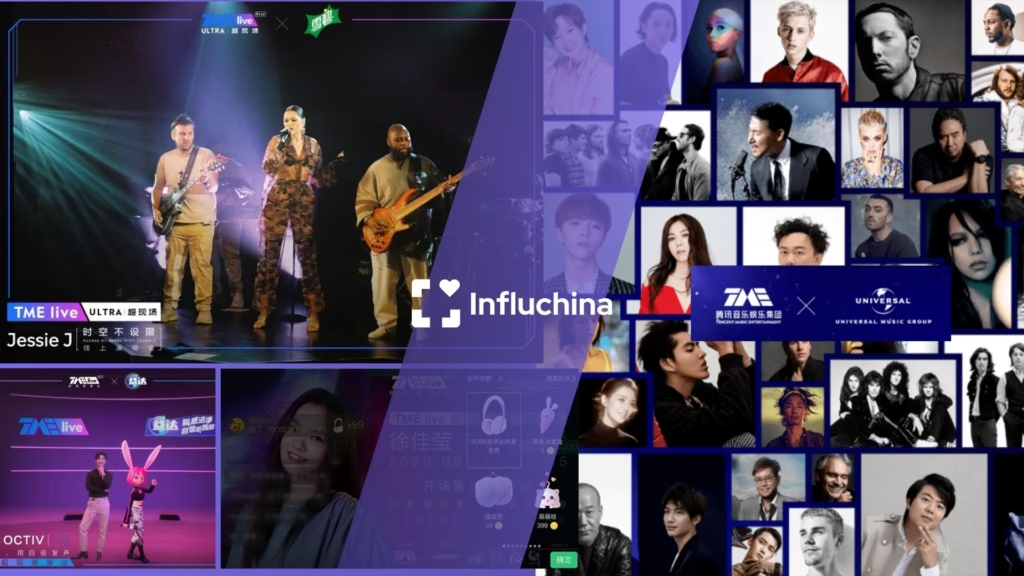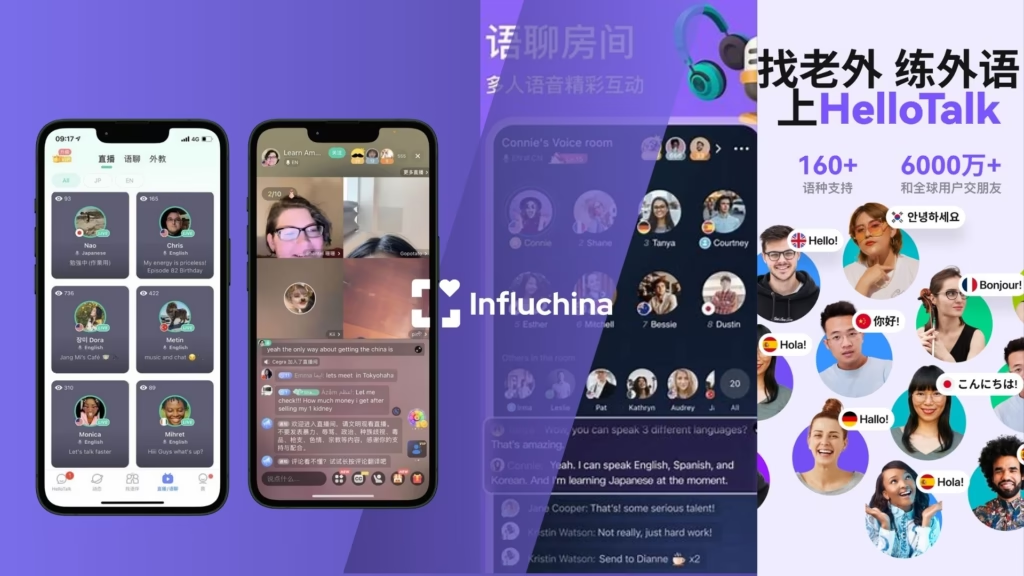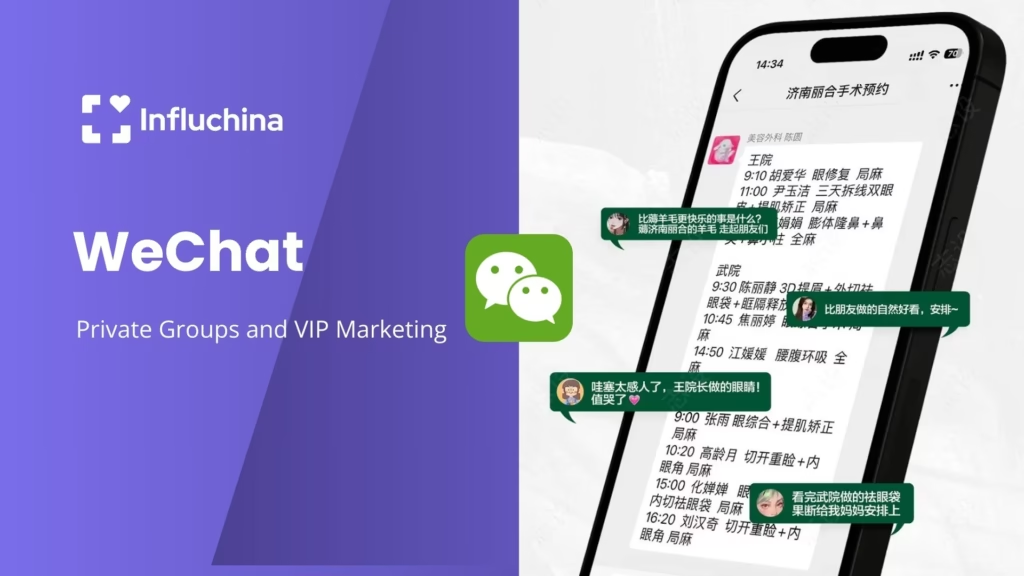
TL;DR | Chinese Marketing Trends
China’s marketing landscape in 2025 is evolving faster than ever — shaped by digital innovation, shifting consumer behavior, and the rise of localized strategies. Success now depends on understanding platform-specific trends like KOL + KOC integration, social eCommerce, livestreaming, and AI-powered personalization. Foreign brands must localize storytelling, leverage authentic communities, and adapt campaigns to platforms such as Douyin, Xiaohongshu, WeChat, and Weibo. Partnering with a specialized Chinese marketing agency is key to navigating this fast-changing ecosystem and achieving measurable growth in China.
China remains one of the most dynamic and lucrative markets for businesses worldwide, fueled by rapid digital transformation, rising consumer sophistication, and bold innovations from major domestic platforms. For international companies looking to succeed in this competitive space, staying ahead of Chinese marketing trends is not just advantageous — it’s essential.
In the first quarter of 2025, China’s retail sales of consumer goods reached 12.47 trillion yuan (approximately $1.73 trillion), marking a 4.6% year-on-year increase. Notably, online retail sales grew by 7.9% during the same period, driven by pro-consumption policies such as the expanded trade-in program for consumer goods.
In the first quarter of 2025, China's retail sales of consumer goods reached 12.47 trillion yuan (approximately $1.73 trillion)
To establish a strong and sustainable presence, foreign brands must craft a localized marketing strategy that aligns with evolving consumer behaviors and leverages the unique tools available in China’s digital ecosystem. This includes understanding local platforms, user preferences, and cultural nuances that shape purchasing decisions.
In this article, we’ll explore the most relevant Chinese marketing trends in 2025 and what they mean for foreign businesses entering or expanding in the market. But first, let’s look at why China’s marketing environment is so critical on a global scale.
1. Chinese Marketing Trends: From KOL Marketing to KOC Integration
Chinese marketing trends have undergone a major transformation over the past few years. While KOLs (Key Opinion Leaders) once dominated the digital landscape, today’s most effective strategies blend their influence with the authenticity of KOCs (Key Opinion Consumers).
KOL marketing remains important for brand visibility and large-scale awareness campaigns. KOLs help brands reach wide audiences, create buzz, and launch products with strong visual appeal. However, Chinese consumers have become more cautious, especially after media coverage of influencer misconduct and overly scripted promotions.
As a result, brands are now combining KOL and KOC strategies. KOCs, often everyday consumers, share personal and unscripted reviews that feel more relatable and trustworthy. Their content provides social proof and resonates strongly with younger and niche audiences — making them a powerful force in today’s influencer marketing in China landscape.
The most effective campaigns in 2025 follow this dual approach:
- KOLs generate visibility and attention
- KOCs build trust and authenticity
This strategy reflects a broader shift in Chinese marketing trends toward long-term community building and credibility. After discovering a brand through KOL content, many users seek out KOC reviews to confirm its value—making both essential to digital marketing success in China.
For a deeper dive into how to build an effective influencer strategy, download our free eBook on influencer marketing in China, packed with insights, platform comparisons, and real case studies to guide your next campaign.

2. Social eCommerce and the Rise of User-Powered Sales
One of the most prominent Chinese marketing trends in 2025 is the rapid growth of social eCommerce, where platforms like Xiaohongshu and Douyin have become full-fledged shopping ecosystems. With the rise of Douyin eCommerce, users can now browse, engage, and purchase products directly within the app, thanks to its fully integrated native eCommerce features. This seamless experience combines content and commerce, making product discovery and conversion faster and more organic than ever.
A key evolution in this space is the rise of user-powered sales. Both Xiaohongshu and Douyin now encourage regular users and KOCs (Key Opinion Consumers) with small but engaged follower bases to become part of their affiliate systems. These users can promote products through lifestyle content, reviews, or livestreams, and earn a commission on resulting sales.
This model:
- Incentivizes authentic product sharing, blurring the line between content and commerce.
- Expands a brand’s reach beyond big influencers.
- Leverages trust-based recommendations from everyday consumers.
The shift has created a new layer of decentralized marketing, where word-of-mouth is scaled through social commerce tools. For foreign brands entering China, tapping into these platforms not only drives conversions but also builds credibility through peer-driven promotion.
As social eCommerce continues to evolve, the integration of monetization opportunities for users will remain central to how platforms grow—and how brands connect with audiences in a more organic, community-based way.
3. Chinese Marketing Trends in Livestreaming
Livestreaming remains one of the most powerful drivers of digital sales and engagement in China. In 2025, this format continues to evolve rapidly, becoming more immersive, intelligent, and versatile. These shifts reflect a broader transformation in Chinese marketing trends, where technology and personalization are reshaping how audiences interact with brands in real time.
3.1 Integration with VR and the Metaverse
Platforms like Douyin, Kuaishou, and Bilibili are experimenting with virtual livestreaming environments, allowing brands and creators to host events in interactive metaverse spaces. In these sessions, viewers can engage with avatars, explore digital showrooms, and even purchase virtual products or collectibles, creating a hybrid entertainment-commerce experience.

3.2 Generative AI and Virtual Avatars
The use of AI-powered streamers—such as vTubers and virtual brand ambassadors—is becoming increasingly popular. These digital influencers offer brands a cost-effective, scalable way to maintain a 24/7 presence. AI tools also enable real-time product recommendation engines during streams, tailoring suggestions to each viewer’s preferences and behavior.

3.3 Live Commerce 3.0: Hyperpersonalization
Welcome to the era of hyperpersonalized livestreaming. Using big data and artificial intelligence, platforms can now offer:
- Virtual try-on experiences
- Product recommendations based on browsing or purchase history
- Private livestreams for VIP customers, offering exclusive deals and 1-to-1 interactions
This represents a move from mass broadcasting to curated, intimate experiences that deepen loyalty and increase conversion rates. For brands looking to take advantage of these innovations, working with a specialized China E-commerce Agency can be key to developing tailored livestream strategies that resonate with local audiences and drive measurable results.

3.4 Educational and Professional Content
Livestreaming is no longer just about shopping. On platforms like Zhihu and Xiaohongshu, we’re seeing a rise in live courses, from language learning to exam prep. Meanwhile, B2B companies are using livestreaming for internal training and product launches, adding value through content-driven engagement.

4. Chinese Marketing Trends on Social Media Platforms
In 2025, Chinese social media marketing trends are more platform-specific than ever. Each app has evolved into a highly segmented ecosystem where brands must tailor their strategies to the platform’s unique culture, content formats, and user behavior. From streetwear flash mobs on Douyin to unfiltered skincare meetups on Xiaohongshu, here are the trends defining social media marketing in China today:
4.1 Douyin – Viral Challenges & Instant Shopping
Douyin, the Chinese version of TikTok, is a central player in the evolution of Chinese marketing trends. In 2025, the platform is driving a boom in street culture marketing, where brands collaborate with dancers and creators to launch viral hashtag challenges — often related to fashion, music, and slang.

4.2 Xiaohongshu: Authentic UGC and Community Engagement
Xiaohongshu (Little Red Book) is China’s go-to platform for lifestyle content and product discovery, especially among younger female users. A major Chinese marketing trend on this platform is the shift toward unfiltered user-generated content (UGC) – a key element of effective Xiaohongshu marketing.
Brands are encouraging users to share real, unedited product photos and long-form “slow haul” videos that focus on experience and quality. New features like RedNote Local Guides allow influencers to host group meetups for live product testing, strengthening offline-to-online engagement.

4.3 WeChat: Private Groups and VIP Marketing
WeChat continues to play a dominant role in China’s digital ecosystem. In 2025, one of the top Chinese marketing trends on WeChat is “private circle” marketing — using exclusive groups and Mini Programs to target loyal customers. This strategy is a core element of effective WeChat marketing, allowing brands to build deeper relationships through personalization and exclusivity.
Luxury brands like Hermès are creating private chats and VIP access to product drops. Tools like WeChat Channels and QR code–based Mini Programs enable flash sales and invite-only events, creating a sense of exclusivity and reward.

4.4 Bilibili: Subculture Engagement and Fan Marketing
Bilibili caters to China’s youth subcultures, especially those interested in anime, gaming, and tech. A defining marketing trend on this platform is deep fan engagement through co-branded content, livestreams, and cosplay campaigns.
Brands are sponsoring “bullet screen” commentary during anime premieres and launching limited-edition pop-ups tied to cultural trends. This type of immersive marketing strengthens emotional connection and loyalty among niche but highly active communities.

4.5 Kuaishou: Rural Livestreaming and Group Buying
Kuaishou is a short-video platform focused on lower-tier cities and rural communities, where trust and relatability are key.
A major Chinese marketing trend here is the use of livestreams by real farmers or small shop owners, who show how their products are made. Group buying features (“Kuaishou Families”) allow communities to pool purchases and receive bulk discounts — building strong ties through authenticity and shared values.

4.6 Weibo: Real-Time Trend Marketing and Flash Campaigns
Weibo remains the center of real-time content in China. In 2025, a leading Chinese marketing trend on Weibo is the use of viral hashtags and emotional storytelling to capture user attention.
Brands engage with trending topics through relatable content, while tools like Weibo Flash Sales link special discounts to time-limited posts. This approach is ideal for boosting visibility quickly and reacting to cultural moments in real time.

This platform-specific approach to social media reflects the diversity and complexity of Chinese marketing trends in 2025. Foreign brands looking to succeed in China must adapt their messaging, format, and strategy to each platform — leveraging authenticity, speed, and community in every campaign. For high-end brands, incorporating Luxury Influencer Marketing into the strategy can be especially effective on platforms like Weibo and Xiaohongshu, where aspirational content and lifestyle positioning play a key role.
Partnering with a social media agency in China can help brands navigate these differences effectively, ensuring that content, tone, and timing are aligned with each platform’s unique user behavior.
5.Chinese Marketing Trends: The Rise of KOL-Free Marketing
A growing shift in 2025’s Chinese marketing trends is the move away from celebrity influencers toward more community-driven strategies. Known as KOL-Free Marketing , this approach focuses on building trust through real user communities rather than relying on expensive Key Opinion Leaders (KOLs).
This trend reflects a deeper desire among Chinese consumers for authenticity, transparency, and peer-to-peer connection.
5.1 What Is KOL-Free Marketing?
Instead of paying high fees to influencers, brands engage with small user groups or private communities where people test products and share honest feedback. These users are not professional content creators — they are everyday consumers with opinions that feel more credible and relatable. This approach, known as KOC marketing in China, is gaining momentum for its ability to build trust at scale while keeping costs low, especially in sectors where authenticity matters most.
5.2 Community Tactics in Action
WeChat “Truth Squads”
Brands create small groups (100–200 users) on WeChat where members receive free products to try and are encouraged to post their unfiltered reviews and experiences. The goal is to gather real reactions and let word-of-mouth marketing spread naturally within trusted circles.
Xiaohongshu “Real Review Challenges”
Instead of hiring influencers, brands offer small incentives to regular users who post detailed reviews, before-and-after photos, or honest impressions. This tactic drives engagement and builds a library of genuine UGC (user-generated content).
Why It Matters
- Cost-effective: Up to 70% cheaper than working with top-tier KOLs.
- More credible: Consumers trust real people over scripted endorsements.
- Better for long-term loyalty: Builds organic brand communities.
As Chinese marketing trends continue to evolve, KOL-Free Marketing shows that sometimes, less influence means more impact — especially when trust and authenticity are the goal.
6. Chinese Marketing Trends: Localized Global Brands
One of the most impactful Chinese marketing trends in 2025 is the rise of localized global brands. Instead of applying the same strategy across all markets, international companies in China are now embracing hyperlocal campaigns that reflect Chinese culture, aesthetics, and consumer preferences. This shift is also reshaping the landscape of digital marketing in China, where localized storytelling, culturally relevant product design, and platform-specific content are becoming essential for connecting with Chinese consumers.
This approach helps foreign brands feel more relatable and relevant — and increases trust and brand loyalty among Chinese audiences.
What Does Localization Look Like in Practice?
Global brands are moving beyond language adaptation and into product design, cultural storytelling, and local influencer collaborations tailored specifically for the Chinese market.
Here are two strong examples of how brands are winning with localization:
L’Occitane: Osmanthus Tea-Inspired Line for China
The French skincare brand launched a limited-edition osmanthus-scented product line inspired by the tea-drinking traditions of southern China. The campaign was promoted via livestreams filmed in traditional gardens in Hangzhou, blending beauty, nature, and Chinese cultural references into an immersive brand experience.

IKEA China: Qing Dynasty Minimalism Meets Modern Design
IKEA China released a line of furniture inspired by Qing Dynasty minimalist aesthetics, adapted to modern living. The collection was promoted through Douyin short videos and livestreams, showing the pieces in Chinese-style interiors and appealing to young homeowners with cultural pride and design sensibility.

7. Chinese Marketing Trends in B2B: Innovation Through Tech and Trust
While most discussions around Chinese marketing trends focus on B2C strategies, 2025 is seeing major innovation in the B2B space as well. From advanced virtual events to influencer marketing in industrial sectors, China’s B2B marketing is becoming more interactive, digital, and human-centered.
7.1 Interactive Webinars with 3D Avatars
One of the most innovative B2B marketing trends in China is the use of virtual webinars with 3D avatars. Platforms like Tencent Meeting and VooV now offer tools that allow presenters to appear as animated characters or in virtual environments.
These events are not just presentations — they are interactive experiences where attendees can explore virtual booths, participate in live Q&As, and view product demos in immersive settings. This is especially popular in sectors like tech, healthcare, and manufacturing, where showcasing product functionality is critical.
Why it matters: It helps foreign B2B companies stand out in a competitive environment, engage decision-makers more effectively, and demonstrate technical leadership in a modern format.
7.2 Industrial KOLs on Douyin
Yes, even Douyin (TikTok China) plays a role in B2B marketing. In 2025, a growing Chinese marketing trend involves partnering with industrial KOLs — experts such as engineers, doctors, or technicians — who create educational and promotional content for professional audiences.
For example, medical equipment brands collaborate with respected surgeons or lab technicians to showcase devices on Douyin through short explainer videos, livestreams, or “how-it-works” clips.
Why it matters: These content creators build trust through expertise and credibility, reaching niche B2B audiences in a space where traditional ads may be ignored.
B2B marketing in China is no longer limited to trade shows and white papers. These emerging formats — interactive webinars and expert-led short videos — reflect a broader shift in Chinese marketing trends: combining technology with human storytelling to engage professional audiences.
Interactive webinars and expert-led videos are redefining B2B marketing in China by blending tech innovation with authentic, human-centered storytelling.
8. Contacting a Chinese Marketing Agency
Navigating the intricacies of Chinese marketing trends can be challenging, given the diversity and complexity of the market. It’s crucial to understand various cultural and market-specific factors before launching any strategy.
For businesses looking to establish a foothold in China, partnering with experts can make a significant difference. Consider reaching out to Influchina, an influencer agency in China that specializes in guiding foreign companies through the unique landscape of the Chinese market. With deep insights into both Asian and Western markets, Influchina helps businesses create effective marketing strategies tailored to succeed in China. Their expertise can provide the support needed to bridge cultural gaps and maximize market potential.
Succeeding in China today requires more than translation — it demands true localization. At Influchina, we help global brands turn insights into impact by crafting strategies that connect authentically with Chinese consumers, across every platform and every trend.
FAQ
FAQs: Chinese Marketing Trends
What are the top Chinese marketing trends in 2025?
The leading Chinese marketing trends in 2025 include KOL-KOC integration, social eCommerce, immersive livestreaming, localized branding, and the rise of KOL-free marketing.
How can foreign brands adapt to Chinese marketing trends?
Foreign brands can succeed by localizing content, partnering with trusted platforms like Douyin or Xiaohongshu, and leveraging user-generated content and community-driven marketing strategies.
Why is influencer marketing changing in China?
Chinese consumers are becoming more skeptical of scripted content. As a result, brands are shifting from relying solely on KOLs to integrating KOCs for more authentic and relatable messaging.
What is KOL-free marketing and why is it trending?
KOL-free marketing refers to strategies that rely on everyday consumers (KOCs) instead of celebrity influencers. It’s more cost-effective and trusted by today’s Chinese audiences.
Which platforms are shaping Chinese marketing trends in 2025?
Douyin, Xiaohongshu, WeChat, Bilibili, Kuaishou, and Weibo are the key platforms, each offering unique tools and trends that brands must adapt to for success.
How is livestreaming evolving in Chinese digital marketing?
Livestreaming in China now includes VR integration, AI avatars, hyperpersonalized experiences, and educational content, making it a powerful tool for engagement and conversion.
What role does social eCommerce play in China’s marketing landscape?
Social eCommerce allows users to discover and buy products within apps like Douyin and Xiaohongshu, blending entertainment and shopping for seamless conversion paths. offer faster growth.
Are Chinese marketing trends relevant for B2B companies?
Yes. In 2025, B2B marketing in China is using 3D avatars, virtual webinars, and industrial KOLs to engage professional audiences with high-impact, tech-driven strategies.
How important is localization in Chinese marketing?
Localization is essential. Brands that adapt products, messaging, and campaigns to Chinese culture and consumer preferences build trust and improve long-term success in the market.

